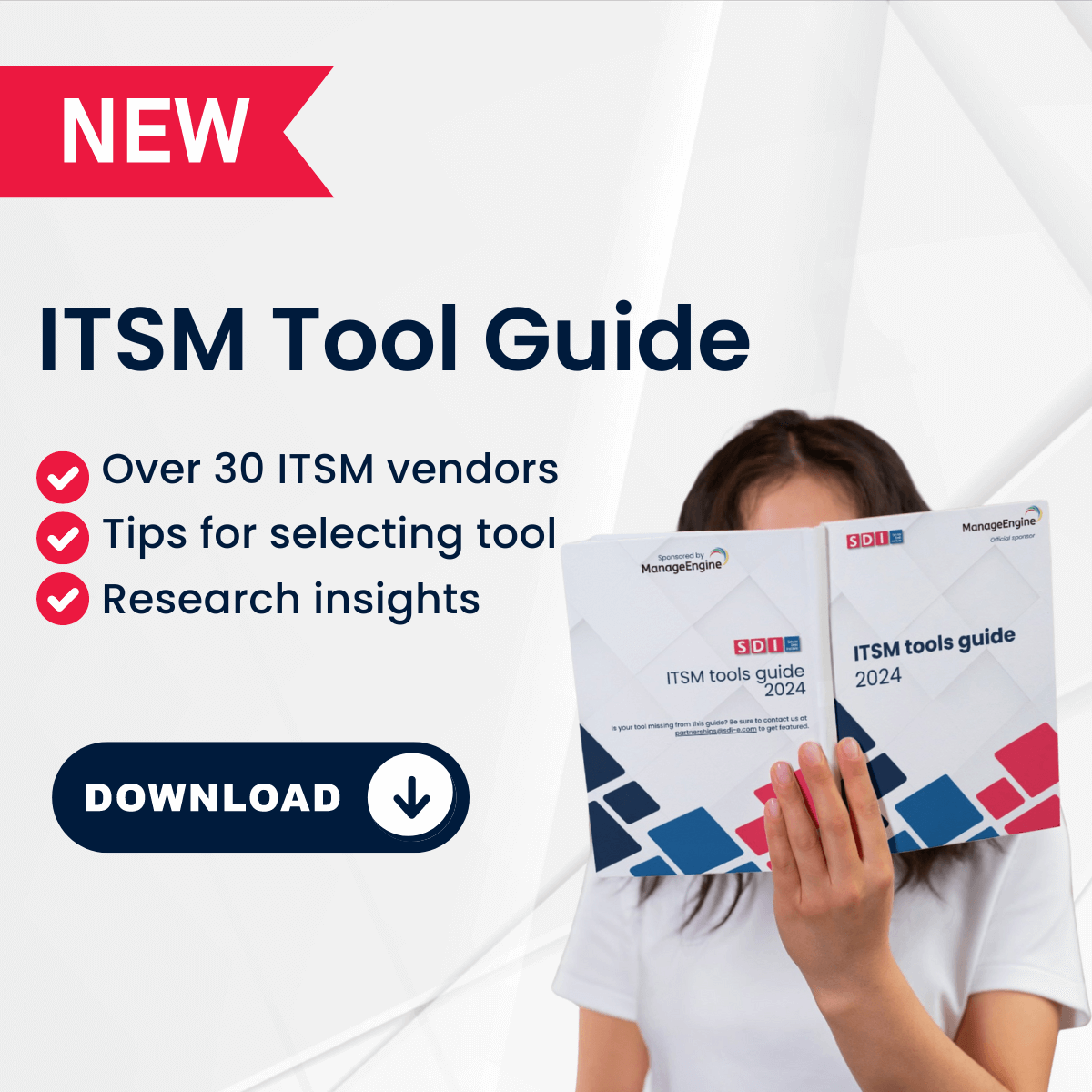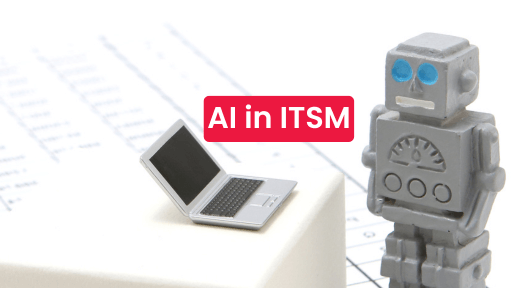 Back to Resources
Back to Resources
When it comes to choosing an ITSM tool, making the right decision is crucial for long-term success. But how do you choose the right solution from so many options available on the market?
Too often, organisations focus solely on a tool’s features, overlooking key aspects like usability, support, human factors, or vendor reliability. Remember, not being thorough in the selection process can cause many issues that could have been easily prevented.
So, what are the long-term consequences of choosing an ITSM tool based solely on its features without considering usability, support, or vendor reliability?
When the tool has usability issues, it can slow down employees as they struggle to find their way around the system. Without proper support from the vendor, downtimes can last longer, and issue resolution can be delayed. This can have a significant impact on business operations and service delivery.
On top of that, unreliable vendors may not provide essential updates, leaving the platform vulnerable to security risks and falling behind the times. These issues don’t just frustrate employees; they also lead to customer dissatisfaction, which can ultimately affect the success of your business.
In this article, we will explore some common mistakes when choosing an ITSM tool and share how to avoid them.
Common mistakes when choosing an ITSM tool
To select the right ITSM tool, you need to find a solution that addresses your current requirements and aligns with your organisation’s long-term objectives. Let’s look at a list of common mistakes you should avoid in your ITSM tool selection process.
#1 Ignoring tool integrations.
❌ Mistake: Many organisations overlook how well the new ITSM tool integrates with existing systems and applications — which can lead to significant challenges. Without proper integrations, you may face data silos, manual data entry, and inconsistent information across systems. This not only disrupts your workflows but can also hinder the efficiency and effectiveness of your IT operations.
✅ Recommendation: To prevent integration issues, assess the tool’s compatibility with your existing systems before deciding. Look for ITSM solutions that offer pre-built integrations, APIs, and robust support for connecting with other applications. If possible, test the platform’s compatibility with your key systems in a staging environment. Most importantly, you should collaborate with your IT team and vendors to plan and execute a smooth integration strategy.
⚡Example
A great example of a tool that excels in integrations is ServiceDesk Plus by ManageEngine. Available both on-premises and as a SaaS solution, ServiceDesk Plus is an ideal choice for organisations looking for a value-oriented enterprise and IT service management platform that is secure and scalable.
#2 Neglecting the importance of a user-friendly interface.
❌ Mistake: If the ITSM tool is not user-friendly, it can lead to decreased productivity, as employees might spend more time navigating the system rather than resolving issues. This can result in longer resolution times for incidents and service requests and ultimately affect overall service quality.
✅ Recommendation: Remember to prioritise a solution with intuitive interfaces and conduct user testing before finalising your choice. If the tool is easy to navigate, it will not only boost productivity and streamline operations but also reduce training time and enhance the user experience.
⚡Example
ALVAO is an IT Service and Asset Management solution designed for Microsoft 365, and it is praised for its straightforward setup and easy adoption for admins and users. Its Microsoft-centric approach also allows seamless native integration with Teams and Outlook, delivering a smooth user experience.
#3 Overlooking other critical users outside the engineering team.
❌ Mistake: Focusing solely on the needs of the engineering team and neglecting other critical users of the platform, such as service desk staff, end-users, and management. As a result, the tool might become complex for some users or lack essential functionalities for different departments. This usually leads to dissatisfaction and inefficiencies.
✅ Recommendation: To avoid this mistake, involve all relevant stakeholders in the selection process. The goal is to ensure the tool meets the needs of its users and the entire organisation. Start by gathering input from a diverse group of users who will interact with the ITSM tool. Conduct surveys or workshops to understand user requirements, pain points, and expectations. This approach will help ensure the selected tool is user-friendly across all departments, supports varied functions, and aligns with organisational goals.
#4 Thinking too tactically.
❌ Mistake: Choosing a solution based solely on the organisation’s current, pressing requirements might not be the best move. If you neglect the organisation’s broader, strategic goals, you could end up with a tool that lacks the scalability, flexibility, or advanced features needed in the future. This means the selected solution might become inadequate over time, and you would have to undergo another expensive and disruptive change later.
✅ Recommendation: Align the selection of the ITSM tool with your long-term business objectives. Evaluate the tool not only for how well it addresses your current needs but also for its potential to support future initiatives and expansion. You can do that by looking for features that offer flexibility and scalability, such as customisable workflows and robust reporting capabilities. It’s also good to consider the vendor’s roadmap and their commitment to future developments and updates.
#5 Focusing exclusively on features.
❌ Mistake: Another common mistake is making a decision solely based on its feature set without considering usability, support, and vendor reliability. Many organisations get too caught up in a tool’s fancy features. But remember, the tool might look good on paper, but if it’s not easy to use or well-supported, it could fall short in practical use. For example, a complicated interface could slow down your team, and if the vendor’s support isn’t good, it could lead to frustrating delays when issues arise.
✅ Recommendation: Remember to consider various factors, such as the overall user experience, vendor support, reliability, and features. Schedule a demo or trial period to try the tool out and get feedback from the people who will use it daily. It’s also good to look into the vendor’s support options and response times. You can check for customer reviews and case studies to see how good their support is.
#6 Not collecting all the facts about the tool.
❌ Mistake: Making decisions based on incomplete or inaccurate information about the tool’s capabilities and limitations. For example, relying only on marketing materials or initial sales pitches might paint an overly optimistic picture of the tool’s functionality and performance. This can often result in wasted time, increased costs, and potential disruptions to your IT operations.
✅ Recommendation: To ensure you have all the facts, start by reviewing detailed product documentation from the vendor, including technical specs and feature lists. Schedule product demos and conduct a trial to evaluate the platform’s performance and compatibility with your existing systems.
⚡ DISCOVER: SDI’s Guide to Selecting a Remote Support Tool
#7 Underestimating the human factor and resistance to change.
❌ Mistake: Failing to consider the human element and potential resistance to adopting a new ITSM tool. This can lead to poor adoption rates, decreased productivity, and even failure of the tool implementation.
✅ Recommendation: Consider conducting a readiness assessment to identify potential barriers to change, such as skills gaps, cultural resistance, or fear of job loss. Create a communication plan that will build trust and ease employee concerns.
Set up a robust training program and provide ongoing help. For example, you can implement the new ITSM tool in phases or as a pilot project. This will allow a smaller group to test the tool and provide you with feedback before a full rollout. Remember, addressing users’ concerns and feedback can help reduce resistance and create a more positive attitude toward the change.
















